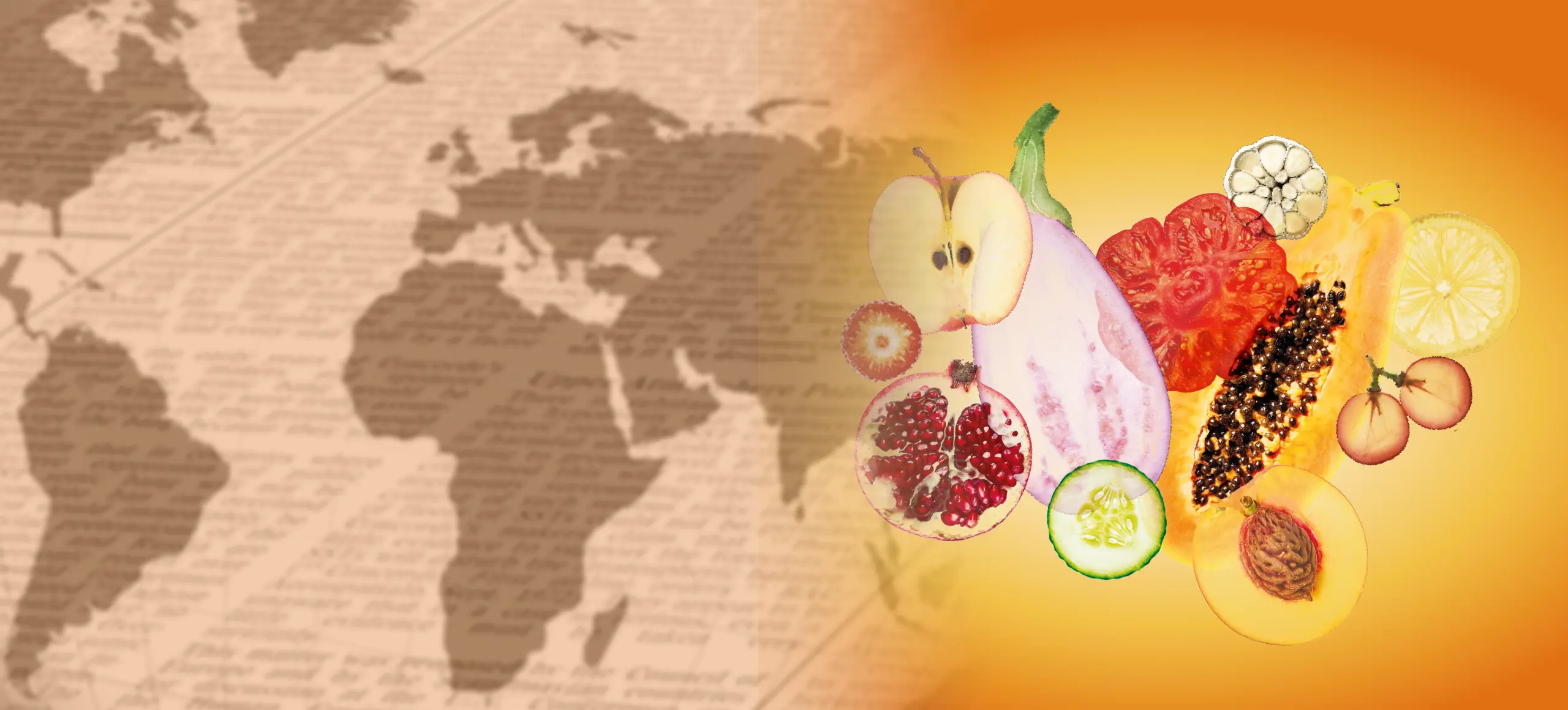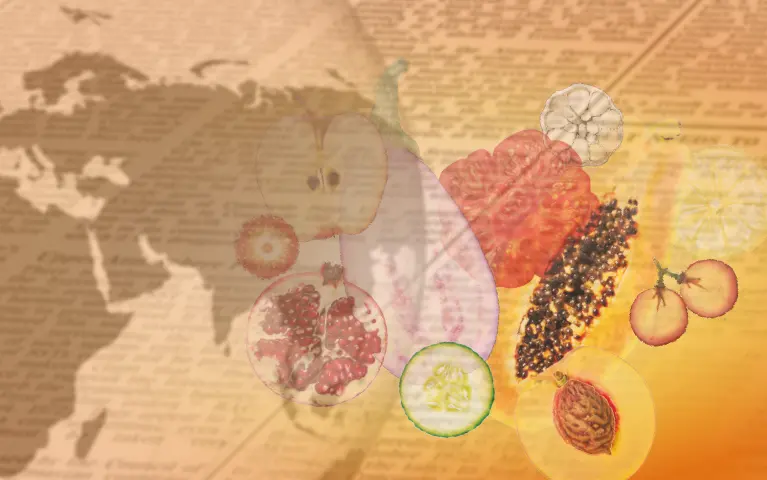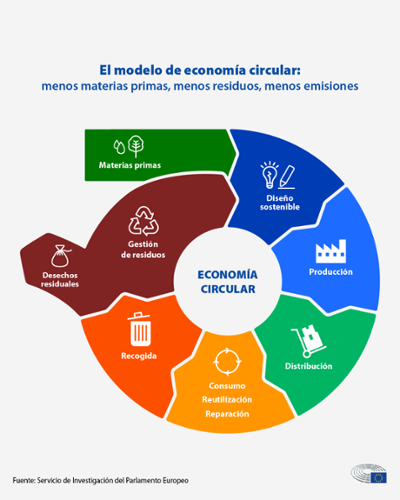

Circular economy: beyond recycling, a new economic model
The passage of time has shown that sustainability is not incompatible with business competitiveness. Companies that are committed to the circular economy have the guarantee that their businesses will have a future and economic prosperity in a society in which respect for the environment is increasingly prevailing.
What is the circular economy?
The circular economy is a production and consumption model that focuses on optimizing resources, reducing waste and minimizing environmental impact. This concept focuses on the optimization of raw materials in the production cycles and also on the use of raw materials as a way of working.
The origin of the concept of circular economy can be traced back to the not too distant past. Since the 1970s there have been currents and disciplines that spoke of environmental economics and industrial ecology in waste management, the value of materials and pollution control. But it was not until 1989, when the concept of circular economy was first mentioned in the book ‘Economics of Natural Resources and the Environment’ by Pearce and Turner. From that moment on, new ideas began to emerge from academics, opinion leaders and companies that revolved around the optimization of resources and the minimization of pollution.
For example, German chemist Michael Braungart and U.S. architect Bill McDonough are considered the fathers of the concept for following the “Cradle to Cradle” philosophy. A design stream that compares industrial and commercial processes to a biological metabolism process, where waste is equivalent to nutrients that can be recovered and reused.
The circular economy is a production and consumption model that focuses on optimizing resources, reducing waste and minimizing environmental impact. This concept bets on the optimization of raw materials in the production cycles and also on the use of raw materials as a way of working.
The origin of the circular economy concept can be traced back to the not too distant past. Since the 1970s there have been currents and disciplines that spoke of environmental economics and industrial ecology in waste management, the value of materials and pollution control. But it was not until 1989, when the concept of circular economy was first mentioned in the book ‘Economics of Natural Resources and the Environment’ by Pearce and Turner. From that moment on, new ideas began to emerge from academics, opinion leaders and companies that revolved around the optimization of resources and the minimization of pollution.
But really, what is the difference between linear and circular economy? The former is one that basically consists of “extract, produce, consume and dispose”, with no regard for the environment. The linear economy seeks to reduce costs based on the use of easily accessible resources, the indiscriminate use of energy and the lack of responsibility for waste. In contrast, the circular economy focuses on minimizing the impact on the environment. It is restorative and regenerative, and seeks to ensure that waste generates capital instead of reducing it.
Key principles of the circular economy
In a world where natural resources are finite, the circular economy emerges as a fundamental paradigm for addressing contemporary challenges. The key principles of this new approach can be summarized by the concept of the “7Rs”: reduce, recycle, reuse, regenerate, redesign, compost and rethink.
These six concepts have something in common, and that is that they are committed to designing products that last over time and that are created through sustainable designs. The “7Rs” also seek to optimize the use of resources by reducing consumption, recycling and reusing the useful life of waste, which can often become a very valuable resource. And finally, the circular economy is key to the regeneration of natural systems. In other words, the repair of objects or remanufacturing should be seen as a way of working that offers greater efficiency and durability.
Beyond recycling: a preventive model
It is crucial to go further. Recycling is not enough to achieve an environmentally friendly production model. Ecodesign, producer responsibility, efficient use of raw materials, consumer awareness and innovation in supply chains are the parameters to follow in order to establish a preventive economic model.
At present, many companies are already working to ensure that their products have packaging made from vegetable waste. In addition, eco-design minimizes the environmental impact of certain containers, either by increasing their capacity or by eliminating polluting components.
The efficient use of raw materials is also a preventive measure. Simple measures such as good product classification and labeling, efficient supply control or the establishment of purchasing quotas with suppliers can reduce the consumption of raw materials by unsuspected figures.
On the other hand, companies that are committed to innovation in their supply chains are investments that become a guarantee of success in the circular economy. The implementation of new and improved strategies, technologies, processes and practices within the supply chain helps to increase efficiency, reduce costs, mitigate risks and improve overall performance.
Benefits of the circular economy
The circular economy is a paradigm for companies around the world. Its environmental, economic and social benefits are increasingly evident. The positive impact on the planet and the reduction of dependence on finite resources are the major benefits of the circular economy. It slows down the use of natural resources, landscape and habitat alteration and helps limit biodiversity loss.
Other benefits:
- Improved security of supply of raw materials.
- Promotes new business models
- Generates wealth and employment
- Benefits the local economy
- Stimulates innovation and competitiveness
- Savings in manufacturing costs and in consumer products.
- Boosts R&D&I and new technologies
- Longer lasting products
- More responsible consumption
- Generates new jobs
- Saves consumers money
- Saves consumers money
Challenges and barriers to the circular economy
The circular economy cannot be achieved in isolation; we must be aware of the position of each of the agents involved in the process.
Companies have to assume initial costs in the adoption of new measures, investments and infrastructures. Consumers have to be educated in environmental matters, a trend that is becoming more and more widespread culturally. And governments must accompany citizens and companies through legislation and government support.
Therefore, achieving the circular model entails a series of challenges and the Ministry for Ecological Transition and the Demographic Challenge is developing the ‘Spanish circular economy strategy and action plans’ that will culminate in 2030:
Reduce national consumption of materials in relation to GDP by 30%, taking 2010 as a reference year.
Reduce waste generation by 15% compared to 2010.
Reduce food waste generation throughout the food chain: 50% reduction per capita at household and retail consumption level and 20% in the production and supply chains from 2020 onwards.
Increasing reuse and preparation for reuse to 10% of municipal waste generated.
Improve water use efficiency by 10%.
Reduce greenhouse gas emissions to below 10 million tons of CO2 equivalent.
But meeting all these challenges is no simple task. The circular economy also faces some barriers that must be overcome. The scarcity of infrastructures, high initial costs, lack of regulations, cultural and social barriers, the lack of knowledge of organizations to implement these new business models and the lack of coordination between states are some of the obstacles facing environmental progress.
The future of the circular economy: global trends
The circular economy has been highlighted as an essential strategic framework by international organizations such as the United Nations or the European Union, as well as non-governmental organizations such as the Ellen MacArthur Foundation. The global trend in most countries is to walk hand in hand with the circular economy because it can increase competitiveness, stimulate innovation and boost economic growth.






